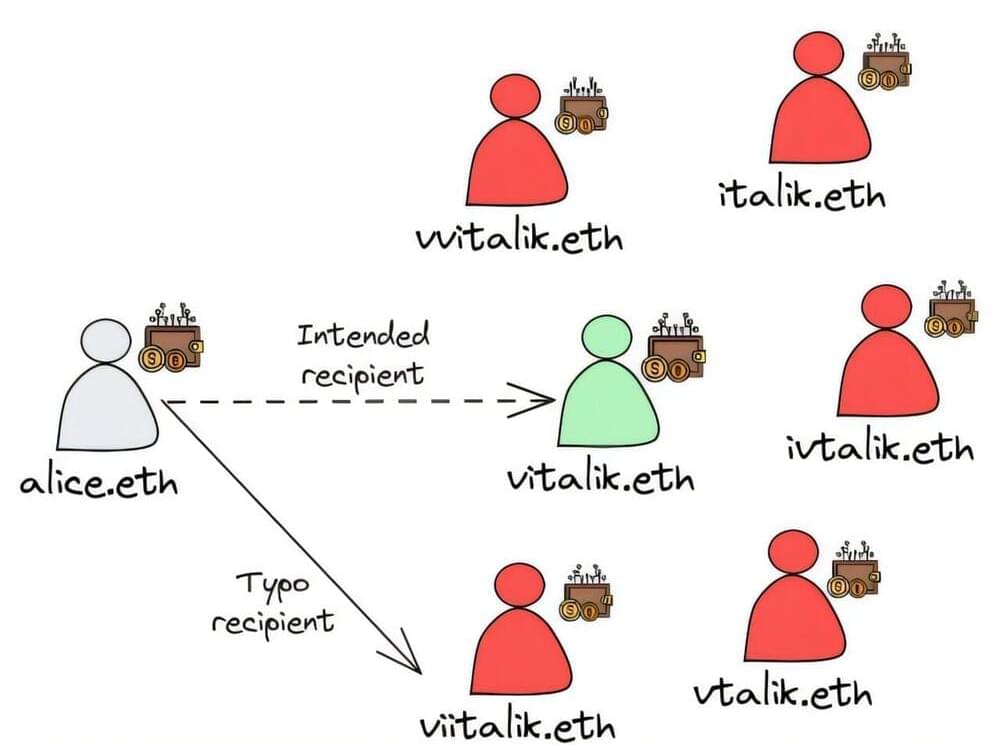Researchers argue the cryptocurrency’s open-source framework will enable it to adapt with quantum-resistant solutions.


Get a Wonderful Person Tee: https://teespring.com/stores/whatdamath.
More cool designs are on Amazon: https://amzn.to/3QFIrFX
Alternatively, PayPal donations can be sent here: http://paypal.me/whatdamath.
Hello and welcome! My name is Anton and in this video, we will talk about new discoveries about bacterial communication.
Links:
https://www.science.org/doi/10.1126/sciadv.adj1539
https://www.lboro.ac.uk/news-events/news/2025/january/cyanob…formation/
https://en.wikipedia.org/wiki/Prochlorococcus.
Previous video:
#biology #bacteria #biofilm.
0:00 Bacterial communication.
0:35 Cyanobacteria complexity.
3:00 Most prominent bacterium in the ocean.
4:10 Bizarre discoveries of nanotubes.
5:25 Possible explanations and studies trying to figure it out.
6:15 Recent study finds interspecies communication.
8:10 Entirely new way to communicate or a trade network?
9:30 Questions and future studies.
10:50 Conclusions.
Support this channel on Patreon to help me make this a full time job:
https://www.patreon.com/whatdamath.
Bitcoin/Ethereum to spare? Donate them here to help this channel grow!
bc1qnkl3nk0zt7w0xzrgur9pnkcduj7a3xxllcn7d4
or ETH: 0x60f088B10b03115405d313f964BeA93eF0Bd3DbF
Space Engine is available for free here: http://spaceengine.org.

“By compromising developer accounts, attackers not only exfiltrate intellectual property but also gain access to cryptocurrency wallets, enabling direct financial theft,” the company said. “The targeted theft of private and secret keys could lead to millions in stolen digital assets, furthering the Lazarus Group’s financial goals.”
The malware architecture adopts a modular design and is flexible, and capable of working across Windows, macOS, and Linux operating systems. It also serves to highlight the ever-evolving and adaptable nature of nation-state cyber threats.
“For North Korea, hacking is a revenue generating lifeline,” Sherstobitoff said. “The Lazarus Group has consistently funneled stolen cryptocurrency to fuel the regime’s ambitions, amassing staggering sums. With Web3 and cryptocurrency industries booming, Operation 99 zeroes in on these high-growth sectors.”
A team of researchers from Stanford University has found a unique way to mine bitcoin that could have a massive impact on the perceptions of the cryptocurrency.
According to its website, Pi Network was designed in part to make the process of mining bitcoin significantly less energy-intensive.
Cryptocurrency mining is a controversial practice in part because it remains largely unregulated. It uses massive amounts of power that frequently comes from dirty energy sources such as gas and coal as well as massive amounts of water to help keep its server banks cool and functional.
Get a Wonderful Person Tee: https://teespring.com/stores/whatdamath.
More cool designs are on Amazon: https://amzn.to/3QFIrFX
Alternatively, PayPal donations can be sent here: http://paypal.me/whatdamath.
Hello and welcome! My name is Anton and in this video, we will talk about the potential dangers of mirror life.
Links:
https://theconversation.com/mirror-life-forms-may-sound-like…ent-246013
https://www.nature.com/articles/s41565-024-01627-z.
https://www.nature.com/articles/s41557-023-01411-x.
Previous videos:
https://youtu.be/0MRGJNKACYs.
https://youtu.be/L1wkR-92Rys.
#chirality #biology #mirrorlife.
0:00 Mirror life?
0:40 Chirality and handedness of molecules and why it’s important.
2:40 Recent advances in biochemistry.
3:45 New technical report warns science.
4:50 All life is handed.
6:00 What this could do in theory.
7:45 Conclusions and additional propositions.
Support this channel on Patreon to help me make this a full time job:
https://www.patreon.com/whatdamath.
Bitcoin/Ethereum to spare? Donate them here to help this channel grow!
bc1qnkl3nk0zt7w0xzrgur9pnkcduj7a3xxllcn7d4
or ETH: 0x60f088B10b03115405d313f964BeA93eF0Bd3DbF
Space Engine is available for free here: http://spaceengine.org.

One hacker has managed to recover over $2,000,000 for a man who forgot the password to his crypto wallet by breaking into the physical device in a ‘high-stakes’ hacking attempt.
Even in its infancy cryptocurrency was worth a lot of money, and it’s surprisingly easy to lose it all with one simple mistake.
Horror stories of people accidentally throwing away hard drives with hundreds of millions of dollars worth of Bitcoin are more than enough to scare anyone away, and this particular video shows how close of a call it can be to recover otherwise simple information.
Get a Wonderful Person Tee: https://teespring.com/stores/whatdamath.
More cool designs are on Amazon: https://amzn.to/3QFIrFX
Alternatively, PayPal donations can be sent here: http://paypal.me/whatdamath.
Hello and welcome! My name is Anton and in this video, we will talk about a major discovery in regards to the origins of life on Earth and the idea known as RNA World Hypothesis.
Links:
https://www.cell.com/molecular-cell/fulltext/S1097-2765(24)00738-X
https://www.nature.com/articles/nrm.2017.7
https://theconversation.com/cells-have-more-mini-organs-than…als-239558
https://www.cell.com/biophysj/fulltext/S0006-3495(20)307…all%3Dtrue.
Previous videos:
https://youtu.be/DOUTF2cH4Ao.
https://youtu.be/UMJYVYX1VPg.
0:00 Intro to origins of life 1:00 Difference between eukaryotic and prokaryotic cells 2:15 Organelles without membranes that make no sense 3:00 Disordered proteins that form strange structures 5:00 Examples of biomolecular condensates 6:40 Recent discoveries and what it led to 8:20 Bacteria have them too! 9:10 RNA World Hypothesis connection 9:50 Recent discovery provides important evidence 11:10 Conclusions and what this means.
Support this channel on Patreon to help me make this a full time job:
https://www.patreon.com/whatdamath.
Bitcoin/Ethereum to spare? Donate them here to help this channel grow!
bc1qnkl3nk0zt7w0xzrgur9pnkcduj7a3xxllcn7d4
or ETH: 0x60f088B10b03115405d313f964BeA93eF0Bd3DbF
Space Engine is available for free here: http://spaceengine.org.


The Public Utilities Commission of Texas (PUCT) on Thursday adopted a rule requiring virtual currency mining facilities in the region maintained by the Energy Reliability Council of Texas (ERCOT) to register with the commission. In these registrations, the PUCT seeks each facility to share its location, ownership information and demand for electricity.
Cryptocurrency mining, in which computers crack codes in order to verify crypto transactions, has been on the rise in Texas for the past few years, specifically after China banned the practice in May 2021. The state itself was luring miners to set up shop here, offering relative regulatory freedom at first. But in the last year, Texans have been speaking out against the mines, which operate scores of their large computers at all hours of the day. The computer usage, coupled with the fans required to cool down the hard-working machines, can use up a lot of power and make the kind of noise that residents say make them sick.

A team of cybersecurity researchers at Stony Brook University has uncovered a new way for scammers to steal from unsuspecting cryptocurrency users. They have posted a paper to the arXiv preprint server describing the new crypto scam and how users can protect themselves.
Cryptocurrency is a type of digital currency run on a secure online platform. One example is Coinbase. Crypto currency is stored in a crypto wallet. In this new study, the team in New York reports that scammers have found a way to get people to redirect crypto payments away from intended recipients and toward wallets held by the scammers.
The researchers call the scam typosquatting. It involves setting up Blockchain Naming Systems (BNS) domain names that are similar to those used by well-known entities. It exploits the use of simple word-based addresses rather than the complicated and hard-to-remember letter and digit codes commonly associated with crypto wallets.